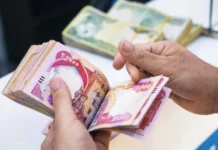Good Morning ,
Dollar Supremacy Threatened: The U.S. Bets Big on Stablecoins to Halt Global De-Dollarization
As global confidence in the U.S. dollar continues to erode, the United States is making a bold play: stablecoins. With inflation-ridden emerging markets drifting toward alternative currencies and geopolitical rivals advancing multipolar monetary models, Washington is now pivoting to digital finance as a last line of defense.
Dollar Weakens Despite High Rates, Tariffs, and Sanctions
The numbers paint a stark picture. The dollar just marked its worst semester since 1973, with over a 10% drop in value, according to ABC News. Even high Treasury yields are failing to entice investors. A viral post from Global Markets Investor summed up the sentiment:
“The dollar continues to fall despite high yields on Treasury bonds. There may no longer be enough demand for American assets. This calls into question its role as the world reserve currency.”
The dollar’s share of global foreign exchange reserves has slipped from 70% in 2000 to just 55% today, according to Sygnum. While Washington responds with tariffs—most recently 50% levies on BRICS and anti-dollar economies—those same moves risk weakening international trust.
Even legendary investors like Warren Buffett have warned of a dollar in decline, with Robert Kiyosaki, Arthur Hayes, and Donald Trump echoing fears of a monetary collapse.
Enter the GENIUS Act: The U.S. Stablecoin Strategy
To counter this erosion, the U.S. is pushing forward a digital policy anchored in blockchain: the GENIUS Act. Backed by Trump, David Sacks, and Scott Bessent, and passed in the Senate, the legislation provides a regulatory framework for dollar-pegged stablecoins.
These digital dollar proxies are rapidly becoming a geopolitical tool. Their strategic appeal? Offering economic stability in inflation-stricken emerging nations, where local currencies are crumbling.
“Global demand for dollar stablecoins is a geopolitical opportunity to maintain US monetary dominance.”
— Sygnum report
Institutions like Fireblocks and Sygnum are already building instant settlement networks with stablecoins. Meanwhile, countries like the UAE are experimenting with dirham-backed stablecoins, highlighting the global momentum.
But not everyone is on board. In April, Italy’s Finance Minister warned that U.S. stablecoin policy may pose greater risks than tariffs—a reflection of growing European unease with Washington’s digital power projection.
A Bandage or a Backfire? The Limits of the Stablecoin Gamble
While stablecoins offer short-term utility, they may be masking a deeper systemic decline. The Sygnum report cautions:
“If the decentralized economy expands, dollar dominance can be reinforced by stablecoins. However, their impact will remain limited without massive adoption in Southern countries.”
At its core, the stablecoin strategy doesn’t fix budget deficits, geopolitical mistrust, or U.S. debt dependency. In fact, widespread stablecoin usage could accelerate the visibility of dollar weakness—broadcasting it to a global audience in real time.
Meanwhile, the BRICS Quietly Advance a Multipolar Order
While the U.S. pursues dominance through digital dollars, the BRICS alliance (Brazil, Russia, India, China, South Africa) is quietly developing multi-currency trade systems, with aims to bypass the greenback altogether.
Although the 2025 BRICS summit notably omitted any formal de-dollarization plan, the group continues to explore alternatives to U.S.-led monetary infrastructure—including local currency settlements, sovereign digital currencies, and tokenized trade mechanisms.
Key Facts & Figures
- 📉 Dollar share of global reserves: down from 70% (2000) to 55% (2025)
- 🧾 GENIUS Act: passed by Senate, establishes rules for USD-backed stablecoins
- 🌍 BRICS strategy: focus on regional trade settlement systems, not dollar replacement
- ⚡ Fireblocks & Sygnum: deploying stablecoin-based instant settlement networks
- 🚨 Italy warns: stablecoins pose “a greater danger than tariffs”
Final Thought
Stablecoins might extend the life of the dollar, but they cannot rebuild global trust or reform fiscal realities. As even Elon Musk warns of a looming U.S. debt crisis, it’s increasingly clear: digital fixes can’t patch structural cracks.
What began as a tool of stabilization could ultimately highlight the monetary fragmentation the U.S. is trying to avoid.
@ Newshounds News™
Source: The Coin Tribune
~~~~~~~~~
Ripple Picks BNY Mellon to Back RLUSD Stablecoin Amid $500M Surge
Ripple has officially partnered with BNY Mellon, the oldest U.S. bank, to custody reserves for its RLUSD stablecoin, marking a major moment for institutional adoption of digital assets. In just seven months, RLUSD has surged past $500 million in market cap, with Ripple rapidly expanding its institutional reach and regulatory alignment.
Wall Street Backs Ripple’s Stablecoin
The partnership between Ripple and BNY Mellon represents a leap forward for RLUSD’s credibility and regulatory posture. BNY Mellon will act as the primary custodian of RLUSD’s reserves, which are fully backed 1:1 by U.S. dollars and Treasuries.
“As primary custodian, we are thrilled to support the growth and adoption of RLUSD by facilitating the seamless movement of reserve assets and cash to support conversions.”
— Emily Portney, Global Head of Asset Servicing, BNY Mellon
The move strengthens Ripple’s pitch to regulators and institutional players, sending a strong message: Ripple is playing by the rules—and winning.
RLUSD Rockets to $500M Market Cap
Launched in December 2024, RLUSD has seen explosive growth in a short time, quickly emerging as a key player in the U.S. stablecoin race. It was built for real-world payments and XRP interoperability, and it’s already being used across RippleNet’s enterprise and liquidity solutions.
Ripple’s approach to full collateralization and transparency has positioned RLUSD as a reliable choice amid increasing global scrutiny of stablecoins.
Ripple Applies for U.S. Banking Charter
Ripple isn’t stopping at partnerships. The firm has applied for both a U.S. national banking charter and a Federal Reserve master account—moves that would allow Ripple to:
- Hold customer reserves directly with the Fed
- Access FedWire and other central bank services
- Deepen integration with traditional banking infrastructure
This marks a major institutional play and reflects Ripple’s broader ambition to bridge crypto and traditional finance.
Stablecoin Summer: A U.S. Crypto Renaissance
With Congress advancing the GENIUS Act and Trump’s administration easing restrictions, a U.S.-led crypto resurgence is in full swing. Ripple’s RLUSD is riding this wave, joining the likes of Amazon, Uber, Airbnb, Apple, and Walmart, all reportedly exploring stablecoin integrations.
This “Stablecoin Summer” could reshape the way digital dollars move through the economy.
Swiss Banking Giant AMINA Adds RLUSD Support
Ripple’s global expansion is also accelerating through AMINA Bank, a Swiss institution regulated by FINMA. AMINA is now offering custody and trading services for RLUSD via its secure, bank-grade digital platforms.
This brings RLUSD to Europe’s institutional clients, reinforcing its role as a trusted global digital dollar.
What’s Next?
With the BNY Mellon partnership live, a banking charter pending, and global traction rising, Ripple’s RLUSD may soon cross the $1 billion mark in market cap.
If current momentum holds, Ripple could soon set the standard for regulatory-compliant stablecoins in the U.S. and beyond.
@ Newshounds News™
Source: Coinpedia
~~~~~~~~~
India Distances Itself From BRICS to Secure Trade Deals With the U.S.
In the face of rising geopolitical tensions and newly imposed U.S. tariffs, India is subtly distancing itself from BRICS to preserve its economic relationship with the United States. By reaffirming its commitment to the U.S. dollar, India is making it clear: it has no immediate plans to pursue de-dollarization alongside its BRICS partners.
India Moves to Avoid Trump’s Tariff Threats
With former President Donald Trump back in the spotlight and pushing aggressive tariff policies, India is navigating cautiously. According to Bloomberg, Indian officials are proactively communicating to Washington that they are not undermining the greenback in global trade. This strategy is seen as a bid to remain exempt from Trump’s escalating tariffs.
Trump’s approach has already been demonstrated. On Wednesday, he imposed a 50% tariff on Brazilian goods, just two days after the BRICS 2025 summit, where both India and Brazil played key roles.
“Trump is unhappy with some BRICS members (India) who have been talking about an alternate reserve currency,”
— Mohan Kumar, Envoy to the WTO
India has consistently clarified that it supports local currency trade, but does not endorse abandoning the dollar as a reserve currency—drawing a sharp line between trade facilitation and geopolitical challenge.
India Seeks Favor With U.S. to Strengthen Bilateral Ties
Indian trade officials are working hard to finalize favorable trade agreements and avoid falling under Trump’s protectionist radar. The goal: secure economic deals and avoid retaliatory tariffs that could harm its export sectors.
In contrast to Brazil’s vocal opposition, India is positioning itself as a strategic partner to the United States. Trump’s Vice President, J.D. Vance, recently praised India’s economic potential and emphasized the strategic importance of the alliance.
“The fate of the 21st Century is going to be determined by the strength of the United States and India partnership,”
— Vice President J.D. Vance
This public endorsement signals a growing bond between the two countries, even as BRICS faces internal contradictions regarding de-dollarization and alternative reserve systems.
Key Developments
- 🇮🇳 India reaffirms support for USD in global trade to avoid Trump’s tariff crackdown
- 🇺🇸 Trump imposes 50% tariffs on Brazil, showing seriousness in punishing anti-dollar policies
- 🌐 India draws a line between local currency settlements and de-dollarization efforts
- 💬 VP J.D. Vance calls India a vital U.S. ally for shaping the 21st-century economy
- 🤝 New Delhi remains active in securing trade deals and maintaining economic stability
Final Thought
India’s strategic pivot shows how even BRICS members are not united on de-dollarization. As Trump’s economic pressure grows, national interests are reshaping alliances. For India, economic pragmatism is winning over ideological alignment—choosing U.S. trade over BRICS confrontation, at least for now.
@ Newshounds News™
Source: Watcher.Guru
~~~~~~~~~
Seeds of Wisdom Team RV Currency Facts Youtube and Rumble
Newshound’s News Telegram Room Link
Follow the Roadmap
Follow the Timeline
Seeds of Wisdom Team™ Website






